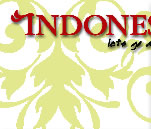|
|
The
Livehood
Although the industrial sector of the economy is gradually gaining
importance as a result of conscientious government policies, Indonesia
is still predominantly agrarian. Major agricultural products for
domestic consumption and export include rice, corn, cassava, soybeans,
timber, rubber, palm oil and various spices for which it has for
centuries been famed. Indonesian agronomists, in cooperation with
the International Rice Institute based in the Philippines, are continuously
developing new rice varieties suitable for growing under particular
conditions prevailing in the various regions of Indonesia.
The government has since 1968 been actively involved in providing
guidance to peasants under the BIMAS mass guidance programme, with
considerable results.
Similar progress has been made in the field of fishery. Shrimp has
become a major foreign exchange earner. To support the growing shrimp
culture, a Shrimp Research Centre has been set up in Jepara (Central
Java) with UNDP assistance.
Under government guidance, fish production in the Indonesian waters
is estimated to have increased at a rate of 5.4% annually. Snail
production is also growing as an export item to countries in Europe
where it is considered a delicacy, like in France, Estates play
an important role within the context of agricultural development,
as their total area covers approximately 6,6 million hectares of
which 83,7% are smallholders.
Tobacco planting has been intensified in several areas, the largest
estates being in East Java where they cover a total area of 1,000
hectares. Tea is continuously being cultivated.
The rejuvenation of coconut plantations proceeds in order to regain
Indonesia's prominent pre World War II position in the export of
this crop. Rejuvenating rubber estates the majority of which are
located in Sumatra, is also being encouraged.
Development in the field of palm-oil has resulted in steadyincrease
in output, i.e. a round 15% annually. Indonesia's first cotton growing
company was set up in 1978 in South Sulawesi to answer Indonesia's
present need for around 350,000 bales annually for its qrowing textile
industry. 
|









